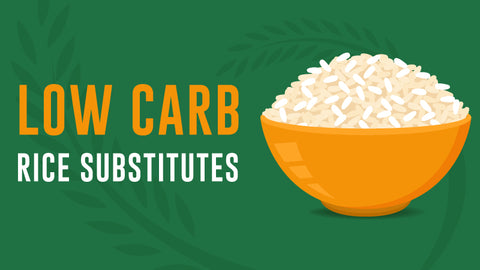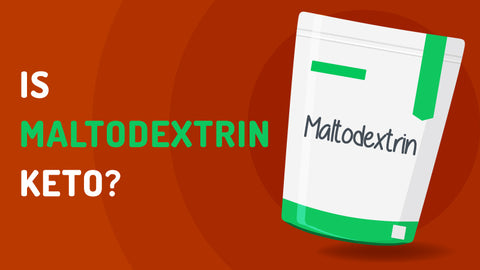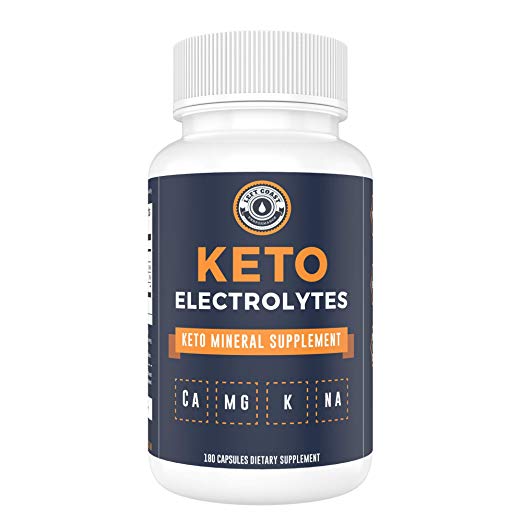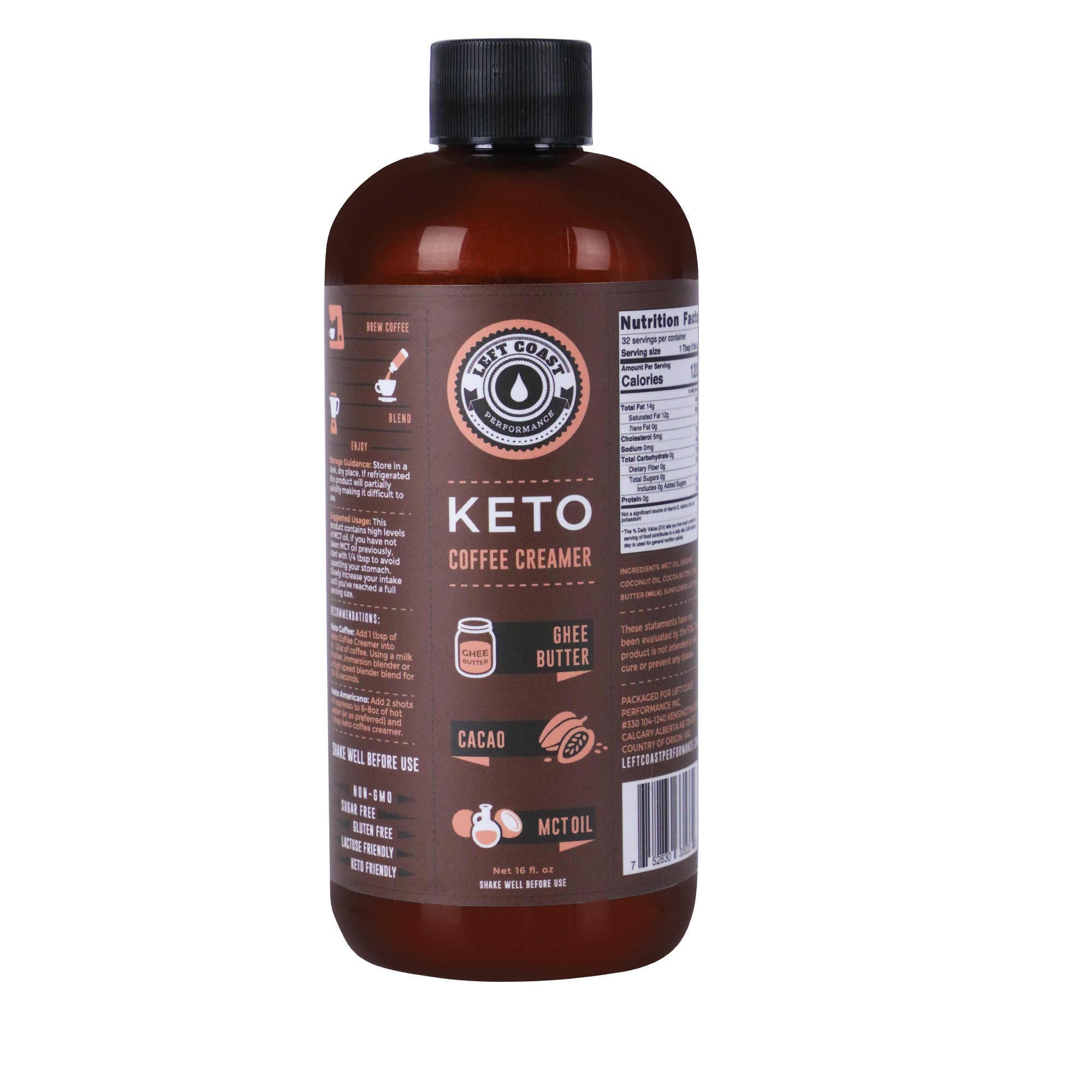Remedies and Symptoms of the Keto Flu

on July 22, 2019
Achieving ketosis comes with a wealth of proven health benefits, but it does require some patience and perseverance to get there. As your body shifts from using glucose to fat as its main energy source, it will go through a bit of a learning curve—and you’re definitely going to feel it, in more ways than one.
From the outset, ketosis will put some extra stress on the body, and it may result in some unpleasant side effects, also known as the “keto flu.” This is a necessary part of the adaptation stage, but it also doesn’t need to be so dreadful. Let’s take a look at what the keto flu is, when you can expect it to hit, and how best to remedy it.
What is Keto Flu?
When upping your fats and drastically limiting your carbohydrate intake, you may experience some unwanted side effects at first, especially if it’s your first time trying out a low-carb diet.
This cluster of symptoms has been dubbed the “keto flu” because it can feel a lot like the real thing. Throughout this short-lived “sickness,” you may experience symptoms including fatigue, nausea, vomiting, dizziness, headaches, insomnia, decreased exercise tolerance, muscle soreness, and constipation.
Some people may also feel irritable, which can be intensified by sugar cravings. To many, it can feel like withdrawal symptoms, similar to those experienced when cutting out caffeine.
These symptoms are not bad, per se. In fact, they signal that your body is adapting to a new form of fuel: ketones, the by-products that come as your liver breaks down fat. That said, depending on their intensity, they can make sticking to your new keto diet tough.
Why Does the Keto Flu Happen?
There are a couple main reasons why you may get struck with the keto flu. Understanding what these are will help you better reduce your symptoms.
Loss of Water & Sodium
There will be a drastic change in how your body uses water and minerals once it kicks into ketosis. Notably, cutting your carb intake will lower your insulin levels. While this is a good thing, it will take your body some getting used to. Insulin is a hormone produced in the pancreas that shuttles glucose (sugar) into your cells for energy. High insulin levels have been linked to obesity, heart disease, and cancer.
However, when you experience drops in insulin, your kidneys will respond by excreting more sodium and water. This is why you’ll likely notice an increase in urination when starting a keto diet. This is also why you’ll quickly drop some pounds (mostly water weight) within the first week. While that initial weight loss can be encouraging, your body will respond to losing all that water and sodium with many common symptoms of the keto flu.
Hormonal Changes
When you first switch to a low-carb diet, your body will think it’s going into starvation mode because it’s no longer getting its usual type of fuel. This signals the stress response to kick in, which means you may experience a slight spike in the stress hormone cortisol. There have been a few studies linking low-carb diets to higher levels of cortisol, but the increase appears to only be short-term. During this time, a boost in cortisol may leave you feeling more irritable and restless.
When Does the Keto Flu Start?
So, when does the keto flu hit? You may start noticing signs of the keto flu within the first 24-48 hours of cutting back on carbs. It may hit even sooner if you’ve long followed a high-carb diet.
Such a major change in your eating patterns can come as a shock to your body and it will be quick to respond—all the way down to the cellular level. Just remember that these symptoms are fleeting, and they’re a clear sign that your body is successfully transitioning into the metabolic state of ketosis.
How Long Does the Keto Flu Last?
The good news is, symptoms of the keto flu can subside as quickly as they come on. Most people will feel one or more symptoms during the first week, particularly around days 3-5. Of course, every individual’s experience will differ, depending on genetics and lifestyle. Some people may deal with mild side effects that will resolve in just a few days, while others will be hit hard with severe flu-like symptoms that may last up to a few weeks and gradually diminish within a month. For example, if you’re switching over from a diet high in carbs and sugar, you may be in for more intense withdrawal symptoms.
As your body starts to adapt to running on ketones, though, the bad side effects will go away, and you’ll start to reap the many benefits of ketosis, including weight loss, increased energy and mental clarity, and lowered risk of chronic diseases.
Symptoms of the Keto Flu
There’s an array of signs and symptoms that will help you determine whether your body is transitioning into ketosis. Some of these signs can be encouraging (like the quick drop in water weight), while others can be frustrating and downright painful. Let’s break down some of the typical symptoms of the keto flu, from nausea and vomiting to headaches and insomnia.
Keto Flu Fatigue
Fatigue is a common symptom due to the body getting used to a new energy source and the potential for dehydration from the rapid loss of water and sodium. This is a time to keep your schedule as relaxed as possible, and to hold back from intense exercise days at the gym.
Keto Flu Brain Fog
Along with feeling physically tired, you may also feel mentally fatigued. This is best described as “brain fog,” meaning you could have difficulties focusing, understanding, or processing information. This is due to your brain trying to adapt to using ketones, as well as hormonal changes going on in the body, and the process of weaning yourself off an addictive substance like sugar.
Keto Flu Headaches
Headaches may also be triggered by dehydration and electrolyte imbalances, as well as carbohydrate and sugar withdrawal.
Keto Flu Vomiting & Nausea
Nausea and vomiting can be linked to a low level of electrolytes, which are lost more quickly through the urine. Be sure to not only drink water, but replenish your salts as well (more info on the best way to do this below).
Keto Flu Constipation
Your digestive system will be going through a major change, too, because you’ll be consuming fewer carbohydrates, and, likely, way less fiber. Constipation is caused by dehydration and a lack of fiber, including prebiotic fiber, which helps populate the good bacteria in the gut. You can easily curb this symptom by consuming enough fiber and water. The American Heart Association recommends 25 grams of fiber per day on a 2,000 calorie diet.
On a keto diet, you can reach this goal with fibrous, low-carb vegetables, like broccoli, cauliflower, Brussels sprouts, and leafy greens. You can also supplement with psyllium seed husks, which will give you 13.5 grams of fiber and only 1.5 grams of net carbs for every 1 tablespoon.
Keto Flu Insomnia
You may have difficulty sleeping, especially if you’re experiencing symptoms like cramps, headaches, and cravings. This study found that very low-carb diets can affect sleeping patterns, likely due to the increased metabolism of fat.
An increase in cortisol could be keeping you awake as well, and, since you’ll be releasing more water weight, nighttime trips to the bathroom could also disrupt your sleep. Along with that water loss comes the loss of electrolytes, including magnesium, a mineral that helps you relax and is critical for good sleep. Adding more magnesium to your diet, via salts and foods like fish, nuts, seeds, cacao, and cruciferous vegetables, can help—so can a relaxing bath with Epsom salts.
Keto Flu Runny Nose
Some keto dieters have even reported experiencing a runny nose as a keto flu symptom, but there’s no clear reason why this may be. Some people have suspected it could be due to dehydration that affects the nasal airway.
Keto Flu Remedies
There’s no need to suffer through these symptoms any more than you have to. Here are some easy ways to remedy the keto flu, and help you become keto-adapted faster.
1. Stay Hydrated: Increase Your Water Intake
Since you’ll be expelling more water, you need to stay hydrated. There’s no clear science behind how much water you need to drink, though a good rule of thumb is to use your current body weight in pounds and divide it by two. So, if you weigh 150 pounds, aim for at least 75 ounces of water per day. Also, trust your thirst instinct—if you’re thirsty, drink!—and check your urine color, too, which should be pale yellow. If it’s darker, that’s a clear sign you should be drinking more water.
2. Replenish Electrolytes
Remember that hydration is not just about water, but consuming enough electrolytes as well. Electrolytes are minerals, including sodium, potassium, magnesium, chloride, and calcium. When combined with water, they work as electrical signals in the body that help control body temperature, regulate nerve and muscle functions, and balance blood pressure.
If you’re experiencing headaches, cramps, dizziness, constipation, or bloating this may be a sign of electrolyte deficiency. Boost your electrolytes—especially sodium, potassium, and magnesium—with sea salts, bone broths, and salty snacks. Enjoy magnesium- and potassium-rich foods like fish, meat, and leafy greens, or take an electrolytes supplement.
3. Eat More Fat
Upping your fat intake further can also reduce some symptoms and actually bring you into ketosis faster. Fats will keep you satiated and help curb cravings. In fact, this study found that low-carb dieters were less bothered by hunger and experienced decreased cravings for high-carb and high-sugar foods.
That said, there’s a specific form of fat that works best to alleviate the keto flu and promote ketosis: MCTs (medium-chain triglycerides). This type of saturated fat found in coconut oil can boost your ketone levels and help you reach ketosis faster, and can even allow you to increase your carb intake—by up to 20% of your calories—while still remaining in ketosis.
4. Take Your Activity Level Down a Notch
Starting a keto diet is not the time to start training for a marathon. Keep your cortisol levels down by avoiding intense exercise, which will just put more stress on your body. Mild physical movement, like walking or gentle yoga, can be a good substitute to help relieve stress and lessen any keto flu symptoms.
5. Take Exogenous Ketones
Exogenous ketones are nutritional supplements that contain beta-hydroxybutyrate (BHB), a type of ketone produced in the body. They boost blood ketone levels and help induce ketosis. They can also help wipe out fatigue from keto flu and up your energy levels. They can even help you stay in ketosis if you feel you need to add a few more carbohydrates to your diet (see next remedy).
6. Try Adding in a Few More Calories (or Carbs)
When cutting carbs and committing to a new diet, people will often end up eating fewer calories overall. This can lead to hunger pangs, cravings, fatigue, and other discomfort. Too few calories can also lower your metabolism. Make sure you’re replacing any carbs you cut out with enough fat and protein to remain satiated.
If none of the above remedies help diminish your keto flu symptoms, try adjusting your carbohydrate levels. Some people will find more success, and experience fewer symptoms, by adding back in more carbs and then reducing them gradually to allow their body to slowly ease into a ketosis state.
Keto Flu Supplements
To address most of the remedies above, there are some specific supplements that can help you reduce or even avoid many keto flu symptoms. These supplements can help ensure that you’re getting enough electrolytes, fats, and other important nutrients as you start your keto diet.
Keto Electrolytes
Consider taking a supplement containing key electrolytes—including sodium, magnesium, potassium, and calcium—to replenish these essential minerals. This type of supplement can help reduce symptoms like fatigue, headaches, nausea, vomiting, cramps, and insomnia.
100% Pure Coconut MCT Oil
As mentioned earlier, MCTs can help you increase your fat intake, support ketone production, and get you into ketosis easier and faster. This is because MCTs bypass the normal digestion process of other fats and head straight to the liver, where they are converted into ketones. Coconut oil contains MCTs, but to get the most effective dose, you can choose a pure coconut MCT oil instead. MCT oil may help alleviate symptoms like fatigue and cravings, and shorten your bout of the keto flu significantly.
Bone Broth Protein Powder
Bone broth is made by cooking cow, chicken, and sometimes fish bones, along with connective tissues like tendons and cartilage, and slowly simmering it at low temperatures to make a satiating concoction rich in minerals and amino acids. But there’s an easier way to load up on all those nutrients with a bone broth protein powder or capsules, which are made by spray drying liquid bone broth. Using this as a supplement can aid in digestion and sleep, and reduce any uncomfortable keto flu symptoms.
Beta Hydroxybutyrate (BHB) Salt Ketone Supplement
BHB ketone supplements will kick up your ketone levels, and also boost your energy—nearly immediately. Adding these supplements can make the transition into ketosis easier and quicker.
In Summary: How to Get Over the Keto Flu
You may not be able to completely avoid the keto flu, but you can certainly lessen its intensity. When starting a keto diet, be conscious of the following in order to reduce any debilitating symptoms as you allow your body to become keto-adapted:
Stay hydrated: It’s simple: if you’re thirsty, drink. Aim to consume at least half of your body weight in ounces per day. So, if you’re 150 pounds, make sure to have 75 ounces of water.
Replenish electrolytes: Complement all that water with important minerals like sodium (sea salts and bone broth), magnesium (fish and leafy greens), and potassium (avocados and cruciferous vegetables). Consider taking an electrolytes supplement as well.
Eat enough calories and fats: Make sure you’re replacing carbs with plenty of high-quality fats (like MCT oil), and getting enough calories overall. Restricting too many calories can lower your metabolism and make it harder to achieve ketosis.
Allow your body time to rest and relax: Your body is making an extreme shift in its fuel source, so try not to add any more stress on it. Forgo intense exercise for mild walks or gentle yoga and be sure to prioritize sleep.
Add in other keto-friendly supplements: Along with electrolytes and MCT oil, supplement with bone broth protein powder and BHB ketones to give you a boost of essential nutrients and ketones.
These steps will help stave off the keto flu and let your body (and mind) ease into ketosis in an effective, efficient, and low-stress way.














